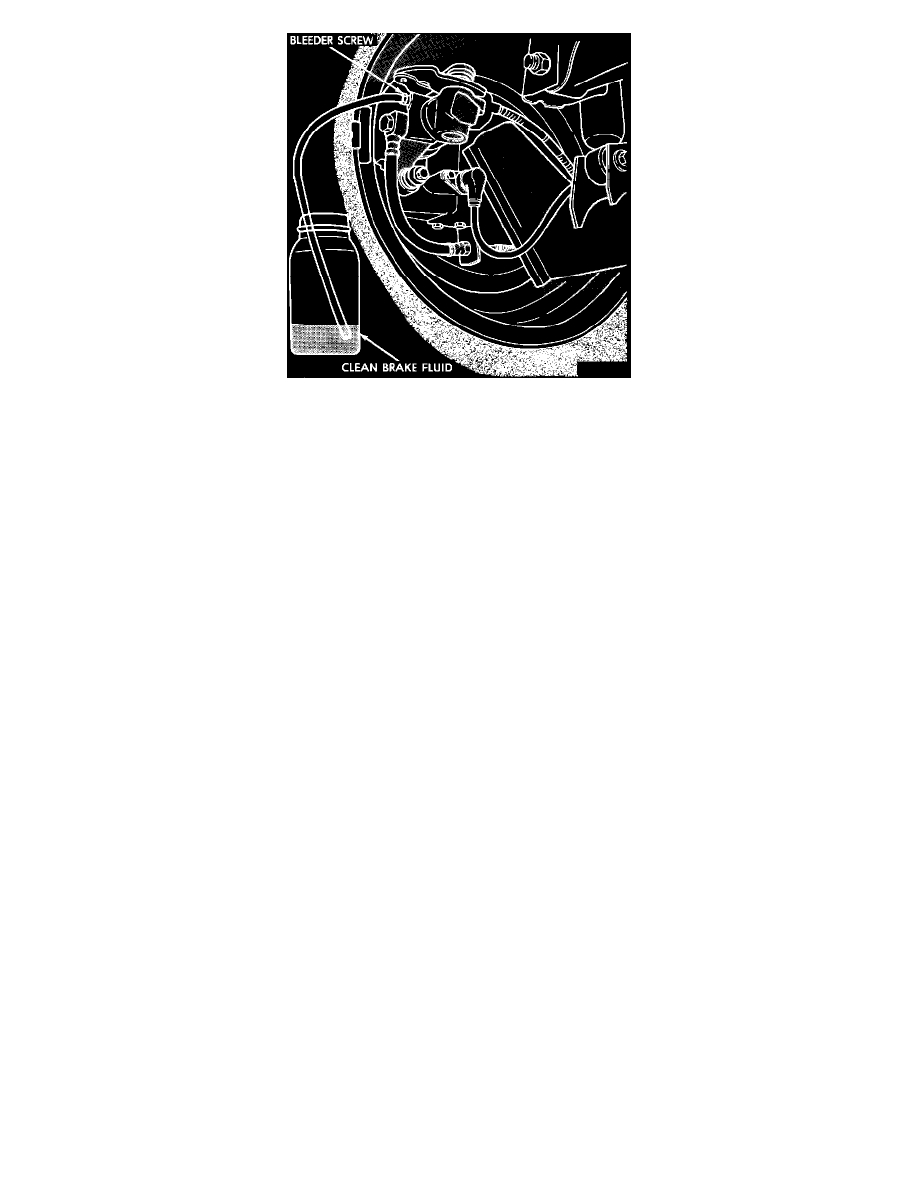Brake Bleeding on Daytona L4-135 22L SOHC Turbo (1985) - Service and Repair

Fig. 47 - Bleeding Brake System
6. Connect a transparent hose to the caliper bleed screw. Submerge the free end of the hose in a clear glass container, which is partially filled with
clean, fresh brake fluid.
7. With the pressure bleeder turned on, open the caliper bleed screw 1/2 to 3/4 turn and allow fluid to flow into the container. Leave bleed screw
open until clear, bubble-free fluid flows from the hose. If the reservoir has been drained or the hydraulic assembly removed from car prior to the
bleeding operation, slowly pump the brake pedal one or two times while the bleed screw is open and fluid is flowing. This will help purge air from
the hydraulic assembly. Tighten bleeder screw to 7.5 ft.lbs. (10 Nm).
8. Repeat step 7 at all calipers. Calipers should be bled in the following order:
a. Left rear
b. Right rear
c. Left front
d. Right front
9. After bleeding at all four calipers, remove the pressure bleeding equipment and bleeder adapter by closing the pressure bleeder valve and slowly
unscrewing the bleeder adapter from the hydraulic assembly reservoir. Failure to release pressure in the reservoir will cause spillage of brake fluid,
and could result in injury or damage to painted surfaces.
10. Using a syringe or equivalent method, remove excess fluid from the reservoir to bring the fluid level to full level.
11. Install the reservoir cap and connect the fluid level sensor connector. Turn ignition on and allow pump to charge the accumulator.
